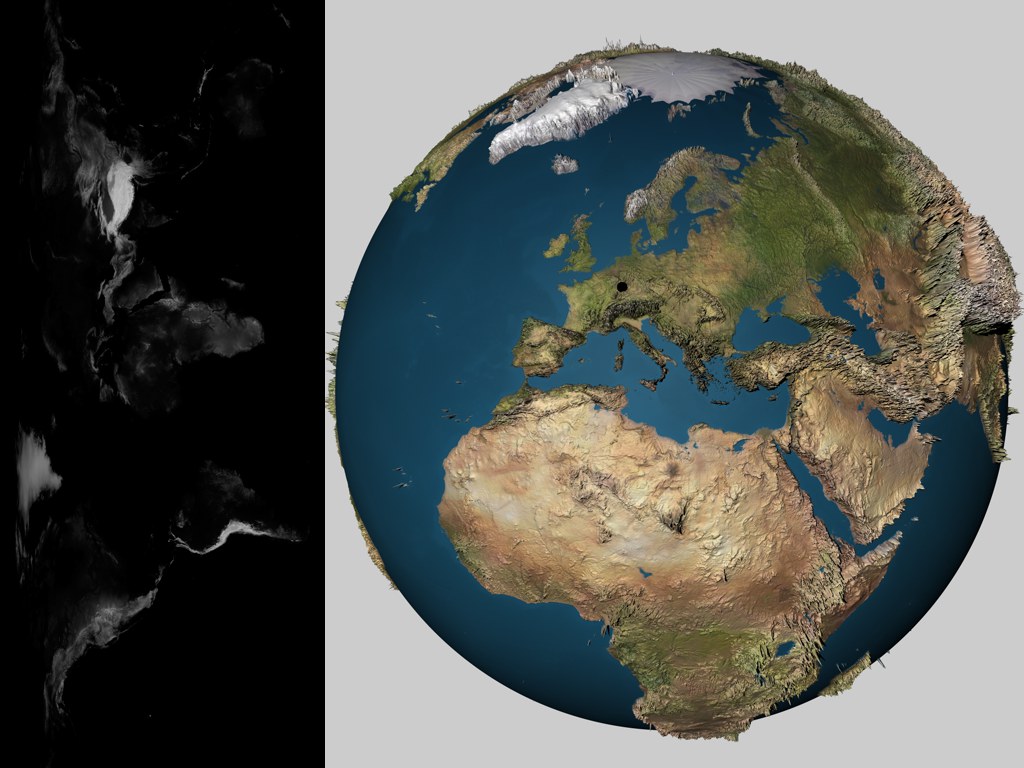Sub-polygon Displacement
 Solar eclipse in Friedrichsdorf, Germany: the displacement texture on the left (color texture not pictured) is responsible for the SPD on the right. The height of the SPD has been exaggerated for illustrative purposes.
Solar eclipse in Friedrichsdorf, Germany: the displacement texture on the left (color texture not pictured) is responsible for the SPD on the right. The height of the SPD has been exaggerated for illustrative purposes.
In principle, sub-polygon displacement (referred to as SPD in the following text) is similar to displacement: an object is deformed during rendering based on a texture’s grayscale palette or, in some modes, color palette. The trick lies in the object’s own internal, adjustable and relatively high subdivision, which allows for very detailed structures without having to actually subdivide the object permanently. In many cases, it is impossible to achieve the same degree of detail through modeling because too much memory would be required.
In fact, you can use a texture (you can use 16-bit TIFF images) to add an extremely high level of detail to an object that has comparatively few polygons.
Cinema 4D uses an advanced memory management system in order to be able to render highly subdivided objects via SPD. SPD adds to the render time, since rendering real geometry using sufficient memory is, with few exceptions, always faster than rendering virtual polygons.
SPD offers the following advantages:
- Small details can be rendered without having to permanently subdivide the object; permanent subdivisions can lead to problems such as viewport slowdown and a file size that is large or even impossible to manage.
- Details can be implemented faster using 2D textures instead of modeling.
- The quality of the rendered image is much better than using a texture map in the bump channel.
You will find the SPD settings on the Displacement tab in the Material Editor or Attribute Manager. There is also an option in the Preferences menu Displacement (MB) that controls the amount of memory assigned to SPD.